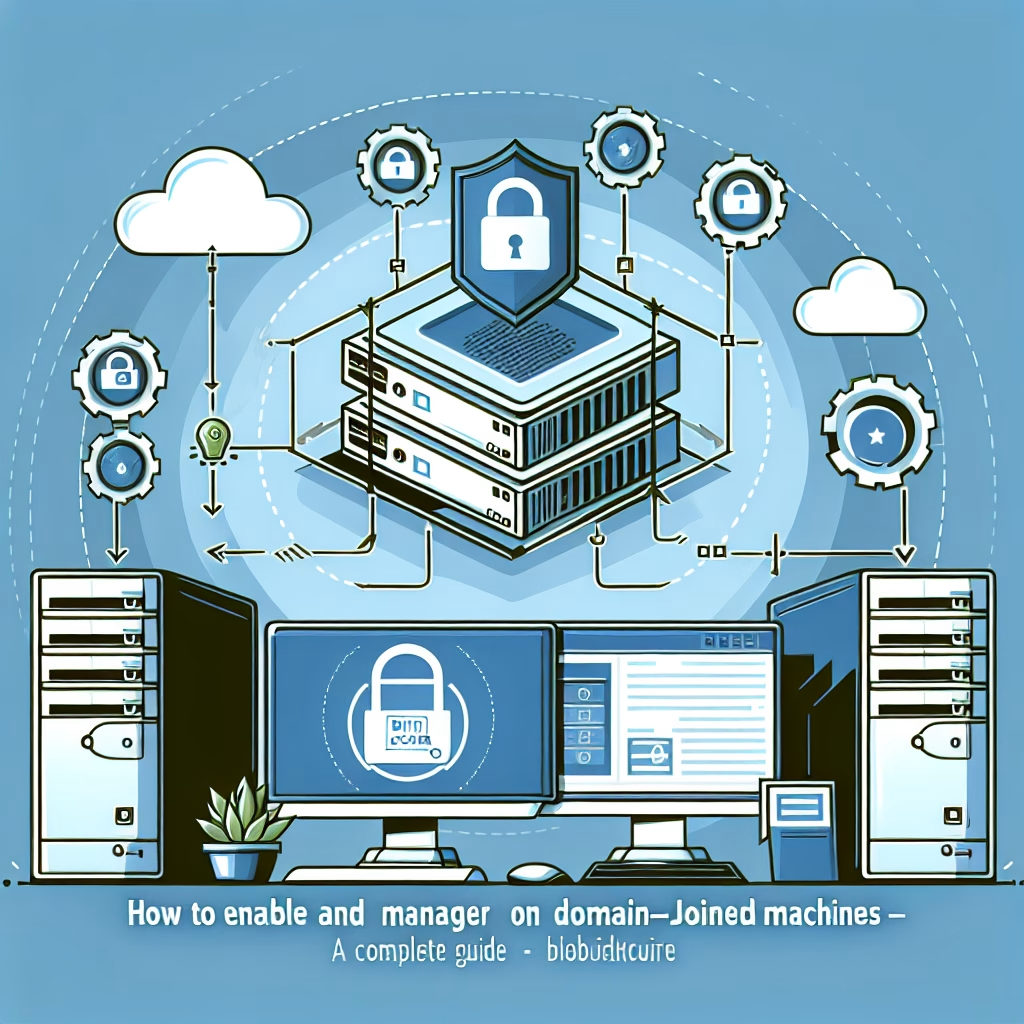BitLocker on Domain Joined Machines
Summary:
BitLocker on domain joined machines refers to the implementation of Microsoft’s full-disk encryption technology within an Active Directory (AD) environment. It enhances security by encrypting the system drive and ensuring data protection while leveraging domain policies for key management. Commonly used in enterprise settings, BitLocker on domain joined machines allows administrators to store recovery keys in Active Directory and enforce encryption policies across the network. Key triggers include Group Policy enforcement, hardware changes, or failed authentication attempts that require BitLocker recovery.
What This Means for You:
- Immediate Impact: If BitLocker recovery is triggered on a domain joined machine, users may be locked out of their systems until a recovery key is provided, disrupting productivity.
- Data Accessibility & Security: Ensure recovery keys are backed up in Active Directory to prevent permanent data loss. Never disable BitLeeper without first decrypting the drive.
- System Functionality & Recovery: Hardware changes or BIOS updates may require re-entering the recovery key; always verify BitLocker state before making system modifications.
- Future Outlook & Prevention Warning: Regularly check Group Policy settings and ensure proper AD integration to prevent unexpected BitLocker locks.
Explained: BitLocker on Domain Joined Machines
Solution 1: Recovering Using Active Directory-Stored Keys
When BitLocker recovery is triggered, domain-joined machines can retrieve recovery keys from Active Directory if properly configured. Administrators can use PowerShell or the ADSI Edit tool to locate the key:
Get-ADObject -Filter {objectclass -eq 'msFVE-RecoveryInformation'} -SearchBase "CN=BITLOCKER,DC=domain,DC=com"
Once the key is obtained, enter the 48-digit recovery key when prompted by BitLocker.
Solution 2: Managing BitLocker via Group Policy
Group Policy Objects (GPOs) in Active Directory control BitLocker behavior on domain-joined machines. Ensure proper configuration by navigating to:
Computer Configuration > Policies > Administrative Templates > Windows Components > BitLocker Drive Encryption
Key policies include “Store BitLocker recovery information in Active Directory” and “Choose how BitLocker-protected operating system drives can be recovered.”
Solution 3: Handling TPM-Related Issues
If a Trusted Platform Module (TPM) reset occurs, BitLocker may require recovery. Clear the TPM in BIOS, then use PowerShell to reinitialize BitLocker:
Initialize-Tpm -AllowClear
Enable-BitLocker -MountPoint "C:" -RecoveryPasswordProtector
Ensure this process is performed under administrative privileges.
Solution 4: Recovering Data from a BitLocker-Locked Drive
If the operating system is inaccessible, use a Windows PE recovery environment with the manage-bde tool to unlock the drive:
manage-bde -unlock C: -RecoveryPassword YOUR_RECOVERY_KEY
For complete data extraction, mount the unlocked drive and copy essential files to a secure location.
People Also Ask About:
- Can BitLocker be bypassed on a domain-joined machine? No, without the recovery key or proper authentication, BitLocker prevents unauthorized access.
- How do I check if a BitLocker key is stored in Active Directory? Use the
Get-BitLockerVolumecmdlet or the AD Administrative Center. - Why does BitLocker keep locking my domain-joined computer? Common causes include TPM resets, failed auto-unlock attempts, or Group Policy enforcement changes.
- Is it possible to decrypt a BitLocker drive remotely on a domain-joined PC? Yes, using PowerShell remoting:
Disable-BitLocker -MountPoint "C:"
Other Resources:
Suggested Protections:
- Always store recovery keys in Active Directory with appropriate access controls.
- Configure TPM + PIN authentication for enhanced pre-boot security.
- Monitor BitLocker status via Microsoft Endpoint Manager or SCCM.
- Test recovery procedures before deploying BitLocker enterprise-wide.
Expert Opinion:
Properly configured BitLocker in domain environments enhances data security while enabling centralized management. However, organizations must balance encryption policies with disaster recovery planning – failing to document recovery mechanisms can lead to operational disruptions and data loss during critical incidents.
Related Key Terms:
- BitLocker Recovery Key
- Active Directory BitLocker Backup
- TPM BitLocker Authentication
- Group Policy BitLocker Settings
- BitLocker Domain Integration
*Featured image sourced by DallE-3





